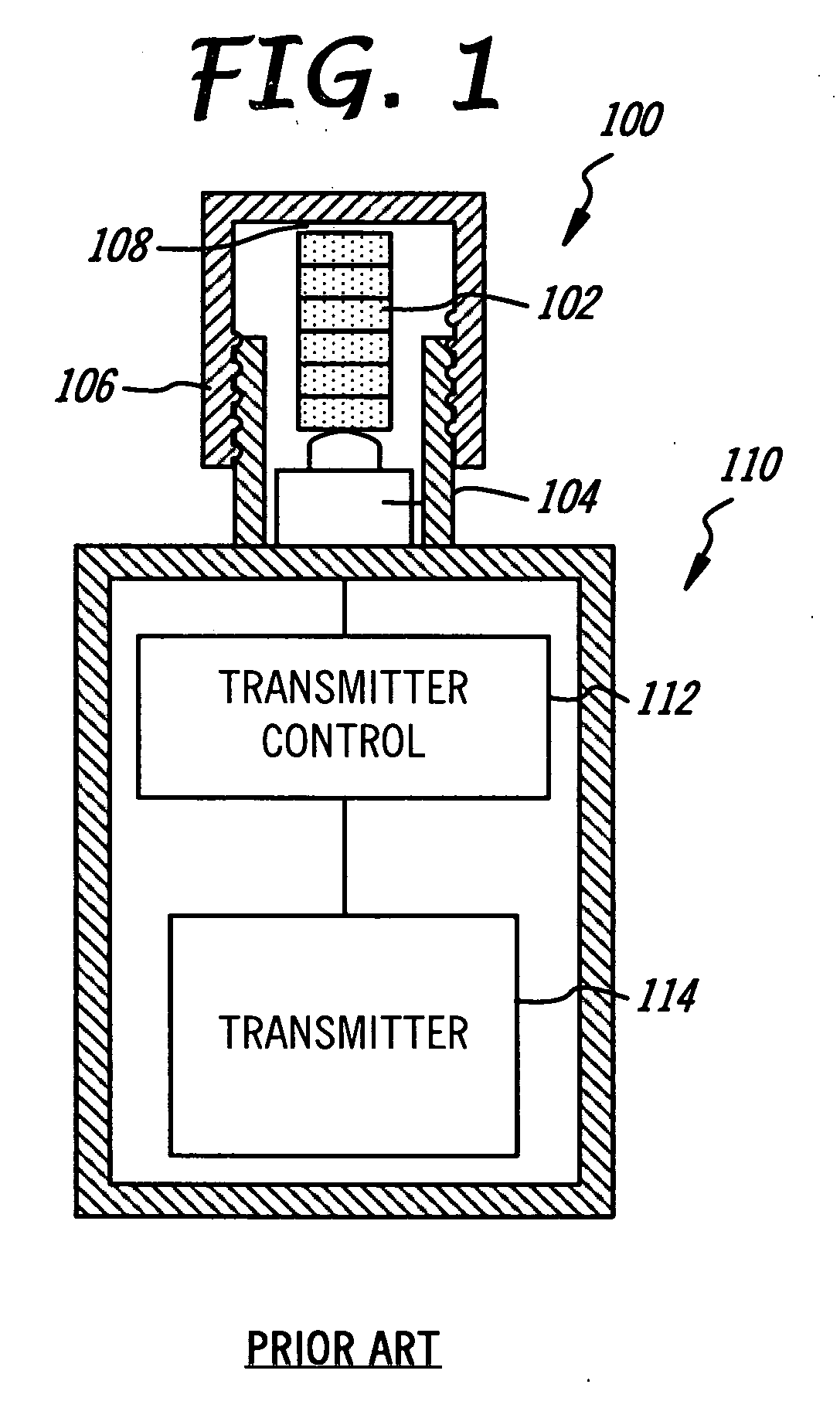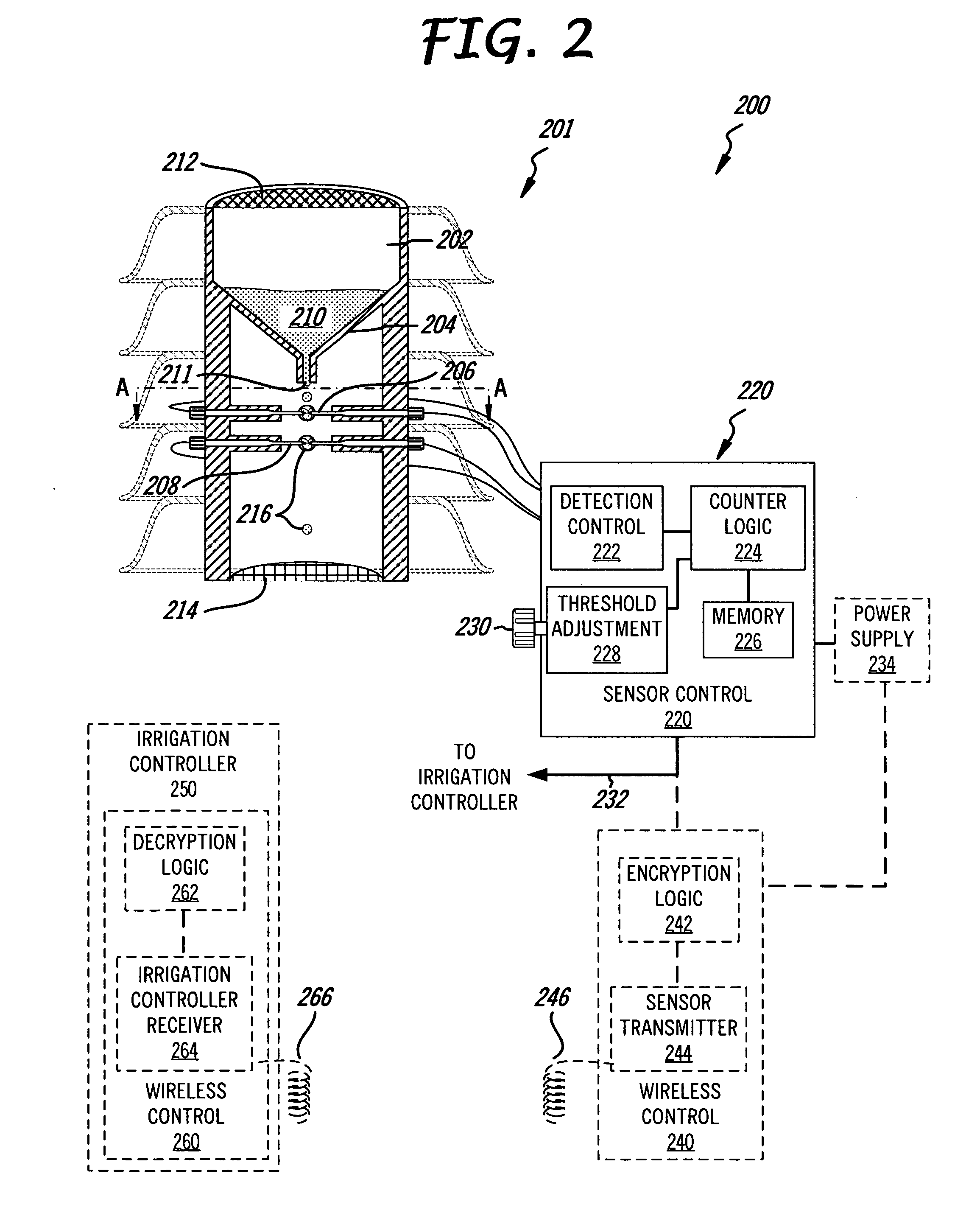Intelligent irrigation rain sensor
a rain sensor and intelligent technology, applied in the field of intelligent irrigation rain sensors, can solve the problems of inherently inefficient controller types, affecting the amount of water available for everyday use, and natural habitat degradation, and achieve the effect of accurate rainfall amoun
- Summary
- Abstract
- Description
- Claims
- Application Information
AI Technical Summary
Benefits of technology
Problems solved by technology
Method used
Image
Examples
Embodiment Construction
Element Reference Number Designations
[0019]100: Prior art rain sensor[0020]102: Hygroscopic disks[0021]104: Switch[0022]106: Housing[0023]108: Adjustment gap[0024]110: Transmitter section[0025]112: Transmitter control[0026]114: Transmitter[0027]200: Intelligent rain sensor[0028]201: Rain sensor unit[0029]202: Rain catcher reservoir[0030]204: Funnel[0031]206: Primary droplet detector[0032]208: Secondary droplet detector[0033]211: Funnel opening[0034]212: Leaf screen[0035]214: Hornet screen[0036]216: Water droplets[0037]220: Sensor control unit[0038]222: Detection control[0039]224: Counter logic[0040]226: Memory[0041]228: Threshold adjustment[0042]230: Adjustment interface[0043]232: Irrigation controller conductor[0044]234: Power supply[0045]240: Wireless control unit (sensor)[0046]242: Encryption logic[0047]244: Transmitter[0048]246: Sensor antenna[0049]250: Irrigation controller[0050]260: Wireless control unit (irrigation)[0051]262: Decryption logic[0052]264: Irrigation controller r...
PUM
 Login to View More
Login to View More Abstract
Description
Claims
Application Information
 Login to View More
Login to View More - R&D
- Intellectual Property
- Life Sciences
- Materials
- Tech Scout
- Unparalleled Data Quality
- Higher Quality Content
- 60% Fewer Hallucinations
Browse by: Latest US Patents, China's latest patents, Technical Efficacy Thesaurus, Application Domain, Technology Topic, Popular Technical Reports.
© 2025 PatSnap. All rights reserved.Legal|Privacy policy|Modern Slavery Act Transparency Statement|Sitemap|About US| Contact US: help@patsnap.com



